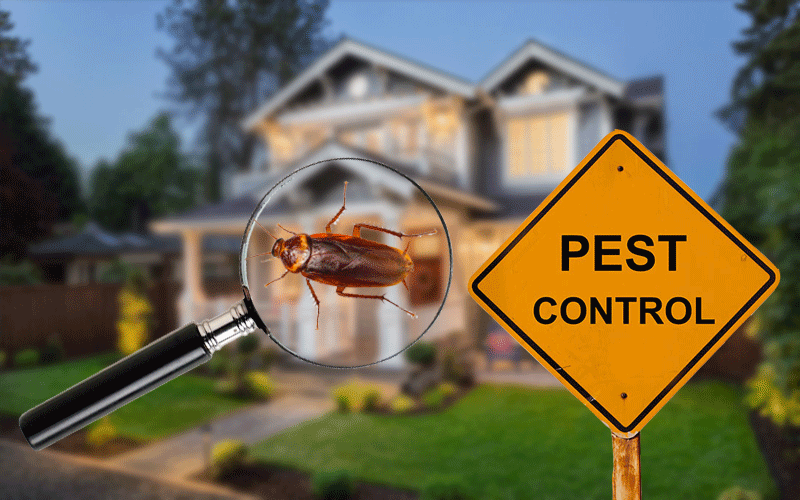Professional A1 Charlotte Bed Bug Exterminator - Quality Service Guaranteed
Professional A1 Charlotte Bed Bug Exterminator - Quality Service Guaranteed
Blog Article
Bed Insect Treatment Break Down: Comparing Chemical Vs. Non-Chemical Solutions
In the realm of bug control, particularly when taking care of the consistent problem of bed pests, the option in between chemical and non-chemical treatment remedies can be a critical one. Both methods offer distinctive advantages and disadvantages, influencing aspects such as performance, safety considerations, and total cost. By checking out the nuanced details of each technique, a clearer understanding of which course to seek in dealing with a bed pest infestation can be attained.
Performance of Chemical Therapies
Chemical therapies for bed bug problems have been extensively identified for their powerful and fast effectiveness in getting rid of these pests. When taking into consideration the effectiveness of chemical treatments, it is important to recognize that they can provide a quick and extensive option to a bed insect trouble. Specialist pest control specialists typically depend on pesticides to target bed insects at different stages of their life cycle, including nymphs, eggs, and adults. These chemicals usually function by interrupting the bed insects' anxious system, leading to paralysis and ultimate death.
Additionally, chemical therapies have the benefit of providing residual effects, indicating that they can remain to eliminate bed bugs even after the first application. This recurring action is specifically valuable in combating any type of potential re-infestations. In addition, the rapid activity of chemical treatments can bring relief to people dealing with severe bed bug infestations, enabling them to reclaim control of their living spaces swiftly.
Safety Interest In Chemical Solutions
One critical facet that calls for mindful factor to consider when using chemical options for bed insect therapy is making certain the safety and security of residents and the atmosphere. Exposure to particular chemicals utilized in bed pest treatments can lead to breathing problems, skin inflammation, or other negative reactions, specifically in people with pre-existing problems or sensitivities.
In addition, the environmental effect of chemical services is an additional substantial factor to consider. Some chemicals utilized in bed pest therapies might be dangerous to useful insects, wildlife, and communities if they leach right into the soil or water supply. It is vital to utilize chemical therapies judiciously, complying with safety standards, and considering much less poisonous choices to reduce these risks and ensure the effective and risk-free administration of bed bug problems.
Benefits of Non-Chemical Approaches
Considering the prospective security problems and ecological impact connected with chemical services for bed insect treatment, discovering non-chemical methods provides an appealing choice with a number of unique advantages. Non-chemical techniques use a much safer option for families, especially those with pets, individuals, or kids delicate to harsh chemicals. These approaches eliminate the risks of direct exposure to toxic substances, decreasing the capacity for unfavorable health and wellness impacts. Furthermore, non-chemical therapies are eco friendly, as they do not contribute to air or water air pollution, making them a lasting choice for pest control.
Furthermore, non-chemical remedies can be effective in targeting bed insects, consisting of hard-to-reach locations where chemical treatments may not pass through - A1 pest control services charlotte. Techniques such as warmth treatment, vacuuming, steam cleansing, and bed mattress encasements give comprehensive eradication without the use of hazardous chemicals.
Limitations of Non-Chemical Treatments

Furthermore, non-chemical treatments usually require multiple applications to attain successful obliteration. This can be taxing and may not always assure complete removal of all bed bugs and their eggs, especially in hard-to-reach or hidden locations.
Moreover, the success of non-chemical therapies heavily relies upon proper implementation and thoroughness, which can be testing for individuals without specialist proficiency. Poor application of non-chemical techniques might cause incomplete eradication, resulting in consistent problems and the need for added therapies.
For that reason, while non-chemical therapies have their benefits, it is vital to recognize these restrictions and consider them when establishing the most efficient technique for handling bed bug problems.
Cost Contrast: Chemical Vs. Non-Chemical Options
Given the restrictions connected with non-chemical treatments, a crucial facet to assess in the context of bed insect monitoring is the price comparison between chemical and non-chemical options. Chemical treatments generally involve the application of pesticides by professionals, which can range from $250 to $900 per area, relying on the extent of the see this here infestation and the size of the location to be treated. On the other hand, non-chemical treatments like warmth therapy or vapor can be extra pricey, with expenses varying from $1,000 to $6,000 for an entire home. While the preliminary cost of chemical treatments may appear lower, numerous therapies may be needed to fully eliminate the problem, possibly raising the overall expense. On the other hand, non-chemical alternatives might offer a much more environmentally friendly and lasting remedy, although they can be cost-prohibitive for some people. Inevitably, when thinking about the price of bed insect treatment options, it is essential termiticide pest control to evaluate the upfront costs against the performance and long-lasting sustainability of the picked method.
Conclusion

Thinking about the potential security issues and environmental effect linked with chemical options for bed pest treatment, checking out non-chemical approaches presents an appealing choice with several unique advantages.Offered the limitations connected with non-chemical therapies, a necessary facet to assess in the context of bed insect monitoring is the expense contrast between chemical and non-chemical alternatives. In contrast, non-chemical therapies like warmth treatment or vapor can be much more pricey, with expenses ranging from $1,000 to $6,000 for a whole home. While the initial price of chemical treatments might appear lower, numerous therapies might be called for to totally eradicate the infestation, potentially increasing the overall cost.In final thought, when contrasting chemical and non-chemical bed pest therapy alternatives, it is vital to think about efficiency, security, benefits, limitations, and cost.
Report this page